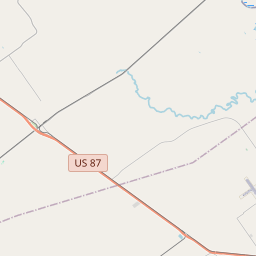Alsatian Immigration Through Lavaca Bay
Historical marker location:






Texas land empresario Henri Castro contracted to bring colonists of various European nationalities to Texas beginning in 1842. The first of these were Alsatians, most of whom spoke German and held German sympathies. They arrived at Galveston, their official port of entry, with 114 passengers from France in early 1843; most then sailed for Lavaca (later Port Lavaca). They waited here before beginning their overland journey to what became Medina County, to establish the town of Castroville. Another, largely Alsatian, group of 129 arrived at Galveston January 1, 1844. About 40 continued to Lavaca, landing on the 10th. Conditions were difficult, and many immigrants succumbed to various coastal fevers. Other ships followed in 1845 and 1846. Castro's contact expired in 1847, after he had transported more than 2,000 colonists to Texas, most through Lavaca Bay. (1999)
Incise on base: Erected by Calhoun County Historical Commission; George Fred Rhodes, Chairman
As one of the most visible programs of the Texas Historical Commission (THC), historical markers commemorate diverse topics in Texas history, including: the history and architecture of houses, commercial and public buildings, religious congregations, and military sites; events that changed the course of local and state history; and individuals who have made lasting contributions to the state, community organizations, and businesses.
More history nearby
The Alamo, a mission in San Antonio, is perhaps the most famous historical site in Texas. It was the site of a key battle during the Texas Revolution in 1836.
During the early 19th century, Calhoun County became a part of the Mexican state of Coahuila y Tejas. However, with the Texas Revolution in 1836, the region gained independence from Mexico and became a part of the Republic of Texas. The county was officially established in 1846 and was named after John C. Calhoun, a prominent statesman and U.S. Vice President.
The economy of Calhoun County has always been closely tied to agriculture, particularly rice and cotton farming. The presence of rich soil and a favorable climate made the region ideal for agricultural production. Later, after the construction of the Gulf Intracoastal Waterway in the early 20th century, the county's economy grew with the expansion of the fishing and shrimping industries.
One significant event in the county's history occurred in 1942 when the U.S. Army established the Matagorda Island Army Airfield. The airfield served as a training facility during World War II and trained thousands of pilots. Today, it is part of the Matagorda Island Wildlife Management Area and is a popular tourist destination.
Calhoun County's history is a testament to the resilience and adaptability of its people. The region continues to flourish, balancing its agricultural heritage with advancements in energy, tourism, and commerce, making it a vibrant and thriving community.
Calhoun County Timeline
This timeline provides a condensed summary of the historical journey of Calhoun County, Texas.
- 1832 - The area now known as Calhoun County is part of the Mexican territory of Coahuila y Tejas.
- 1836 - Texas gains independence from Mexico and Calhoun County is established as a separate entity.
- 1839 - The town of Indianola is founded and becomes a major port on the Texas coast.
- 1852 - Calhoun County is officially organized, with Indianola as its county seat.
- 1875 - A hurricane devastates Indianola, leading to the decline of the town as a major port.
- 1886 - Port Lavaca becomes the new county seat of Calhoun County.
- 1931 - The Discovery Well is drilled, leading to the discovery of oil in Calhoun County.
- 1945 - The Calhoun County Navigation District is created to oversee the development and maintenance of the Port of Port Lavaca.
- 1961 - The Texas Gulf Sulphur Company begins operations in Calhoun County, leading to a significant economic boost.
- Today - Calhoun County is a thriving coastal community with a strong economy based on industries such as petrochemicals, agriculture, and tourism.